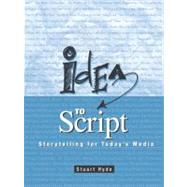
PART ONE.
Introduction.
What This Book Offers You.
The Public Arts.
The Electronic Media.
Preparation for Scriptwriting.
Writing as a Discipline.
The Time Factor.
Writing Under Restrictions.
Writing as a Reflection of You.
Aesthetics and Ethics.
How to Get the Most from This Book.
1. Beginnings and Overview.
Some Questions for Writers.
2. Understanding Your Audience.
Public and Private Arts.
Public Arts in the United States.
The Origins of Public Art.
How People Use the Public Arts.
Analyzing the Public Arts.
Schools of Criticism.
3. Needs and Desires and the Public Arts.
Forty Needs or Desires.
4. Universal Themes in the Public Arts.
How Concerns Become Themes in the Public Arts.
5. Form in the Arts.
The Storytelling Arts.
Temporal Form.
Temporal vs Spatial Form.
Chronological Form of Stories.
Chronological Form Documentaries.
Logical or Thematic Form.
Combination of Forms.
Form in Radio and Television Scripts.
6. Catharsis.
Physiological Catharsis.
Psychological Catharsis.
Experiencing Catharsis.
7. Modes in the Storytelling Arts.
Forms in the Dramatic Arts.
8. The Anatomy of Comedy.
Release and Relief.
Biological Instinct.
Incongruity, the Incompatible Expectation.
Psychoanalytic Theory and Sigmund Freud.
9. Heroic Vision, Form, and Function.
Origins of the Heroic Vision.
The Changed View of Human Nature.
Melodrama and Heroic Form.
10. Tragic Drama Through the Ages.
The Origin of Tragedy.
Tragic Form and Function.
Tragic Drama Today.
PART TWO.
11. From Theories to Practice.
A Public-Service Announcement Campaign: A Case History.
Starting a Project.
Using What Your Sleeping Mind Gives You.
Before Writing Your First Draft.
Writing Your First Draft.
Writing Sights and Sounds, Not Words.
Sounds.
12. Script Formats and Notes About Scripts.
Script Formats.
Radio Script Formats.
Radio Scripts.
Television Script Formats.
Script Formats for Television Dramas and Comedies.
Notes About Scripts.
13. Commercials.
Determining the Parts and the Structure.
The Introduction—Gaining Attention.
The Structural Concept of “The Rule of Three.”
Narrative Commercials.
Dialogue for Two or More Voices.
Production Commercials—Music, Sound Effects, Voices.
Writing Spots That Lack Logical Appeal.
Television Commercials.
Sample Television Scripts.
14. Narrative Scripts.
Essays and Commentaries.
Station Editorials.
Reviews.
Impressions.
15. Production Scripts: Reports, Essays, Sound Portraits, and Industrials.
Feature Reports.
Sound Portraits.
Industrials.
16. Writing Comedy.
Attitudes.
The Initial Concept.
Plotting Comic Dramas.
Comic Sketches.
Character and Dialogue.
17. Media in Community Service.
Two Case Histories.
Public Service Announcements (PSAs).
A Case History: Producing a PSA.
The Advertising Council.
PSAs by Students.
Appendix A: A Compendium of Scripts.
Appendix B: Eighty Universal Themes.
Appendix C: Arthur Miller's Tragedy and the Common Man.
Bibliographies.
The New copy of this book will include any supplemental materials advertised. Please check the title of the book to determine if it should include any access cards, study guides, lab manuals, CDs, etc.
The Used, Rental and eBook copies of this book are not guaranteed to include any supplemental materials. Typically, only the book itself is included. This is true even if the title states it includes any access cards, study guides, lab manuals, CDs, etc.